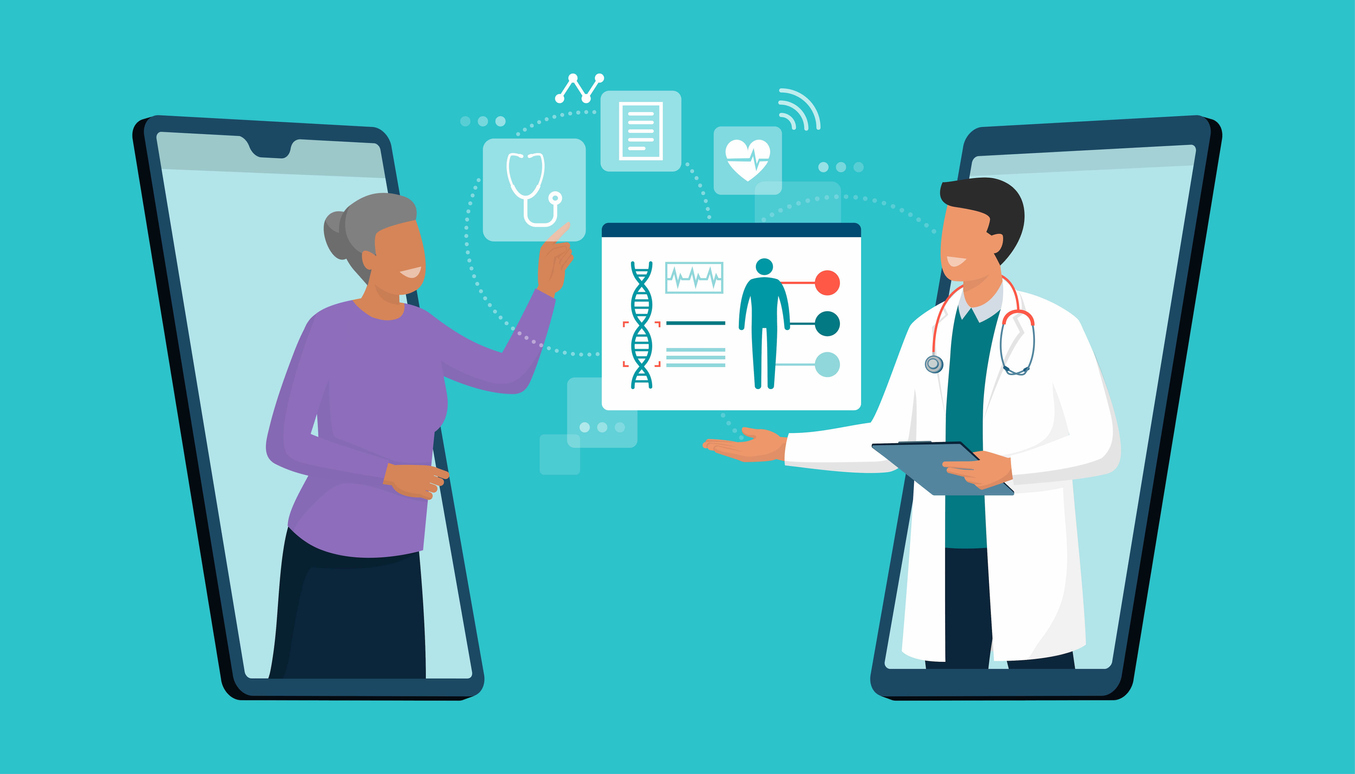As the COVID-19 pandemic reared its head across the nation, all were encouraged, no - urged to socially distance from others to flatten the curve. While social distancing is essential to limiting the spread of the virus, what options does that leave for those seeking medical attention? How can our clinicians provide safe, accessible care, diagnoses, and treatment options for those encouraged to stay home? The answer is Telehealth.
What is Telehealth?
Telehealth integrates the world of healthcare with technology, allowing patients to be seen and clinicians to provide treatment through virtual screens. The World Health Organization (WHO) defines it as, "the delivery of health care services, where patients and providers are separated by distance. Telehealth uses ICT for the exchange of information for the diagnosis and treatment of diseases and injuries, research and evaluation, and for the continuing education of health professionals."
From January 2020 to April 2020 alone, telemedicine claims skyrocketed by 4500% due to COVID-19. For reference, there were 270,000 claims in April 2019 and 12 million claims in April 2020.
With the use of a strong Internet connection, a medical workstation, and a camera, typically through a smartphone, tablet, or computer desktop, clinicians are able to connect with patients from any location, observe any self-reported symptoms or previously submitted photos, engage in active dialogue, and provide treatment directly their patients.
What are the benefits of Utilizing Telehealth?
This form of medical attention allows patients to be evaluated from the comfort of their homes, while also preventing acute care patients from further exposure of possibly infected individuals. Even as hospitals become increasingly busy, utilizing Telehealth ensures maximum efficiency in providing medical care for as many patients as possible. From there, medical treatment is widespread, health outcomes are improved, and patient satisfaction increases.
Healthcare systems are also using virtual technology to conduct specialist consultations (within network) and regulate patient visits with family members who aren't permitted to visit in-person. Providing treatment and nurturing relationships through technology is becoming the norm for this COVID-19 era.
What about the potential obstacles that arise with Telehealth?
Well, technology is an ever-evolving medium for communication, which often poses a threat for anyone who isn't well-versed with navigating and operating technology. If some patients do not own devices or if they do not have direct access to Internet, their options for virtual assessment and treatment begin to wither.
Technical difficulties do not discriminate, however, as clinicians may run into connectivity issues as well. Healthcare IT News discussed some of the challenges healthcare executives have faced through the COVID-19 pandemic, including "remote patient monitoring, interoperability, real-time data analytics, work-from-home resources" and more. Options such as speaking over the phone or rescheduling appointments can be prime, sustainable actions for efficiency. Of course, the legal aspects of Telehealth require authorized consent and e-documentation from patients to receive treatment from clinicians. Learning proper protocols of security and privacy are important to adhere to HIPPA standards.
The other big problem facing the future of telehealth is reimbursement. The Centers for Medicare & Medicaid Services (CMS) has expanded telemedicine during the pandemic, but there is no guarantee reimbursements will continue after the pandemic. In the meantime, they've recently added 11 new telehealth services to Medicare coverage.
Where do we go from here?
In a time where adaptability is not only admired but also a necessity, the healthcare industry responded with Telehealth. This accessible resource offers support, diagnoses, and treatment for patients around the world, and is furthering the destination of care. To learn more information on the effects of COVID-19 in regards to healthcare and the healthcare supply chain, CME Corp is collaborating with Altus to provide a 2-part webinar series. View the first episode on our YouTube channel, OR if you're in a rush, you can listen to the audio version. Make sure to follow us on LinkedIn, and subscribe to our blog so you don't miss a thing!
About CME: CME Corp is the nation’s premier source for healthcare equipment, turnkey logistics, and biomedical services, representing 2 million+ products from more than 2,000 manufacturers.
With two corporate offices and 35+ service centers, our mission is to help healthcare facilities nationwide reduce the cost of the equipment they purchase, make their equipment specification, delivery, installation, and maintenance processes more efficient, and help them seamlessly launch, renovate and expand on schedule.



